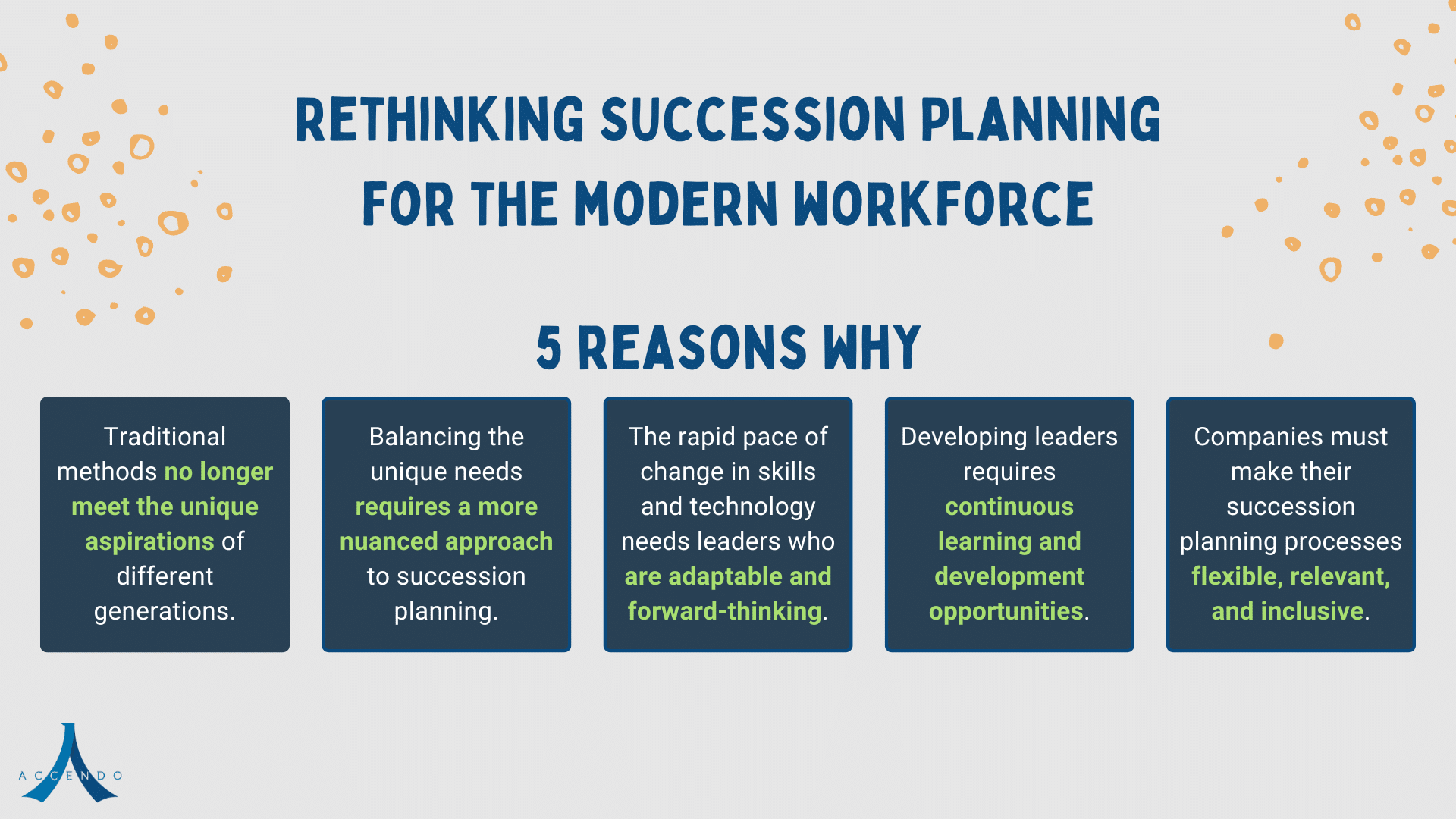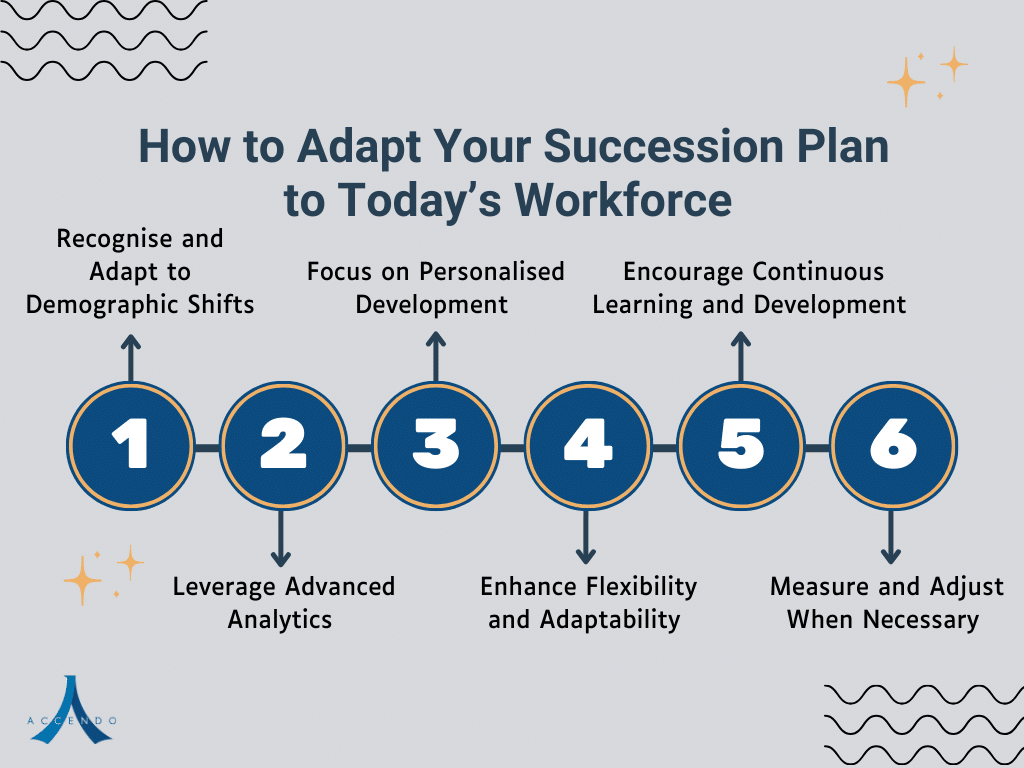Our workforce is changing and the way we do succession planning is also changing. But what is it about traditional succession planning that doesn’t work anymore? In our opinion, the processes are still relevant but with today’s shifting demographics, the execution will need to be updated. Our article dives into how this shift has made things trickier for companies and how you can make succession planning more inclusive, efficient, and adaptable to modern needs. Thus, keeping leadership pipelines strong and future ready.
The Shift in Workforce Demographics and Succession Planning
he workforce is changing fast, and it’s shaking up the business world. Just 10-15 years ago, Baby Boomers and Gen Xers were the big players in the office. The concept was straightforward – climb the corporate ladder, put in the years, and land a leadership role.
But the times have changed. The Malaysian Department of Statistics (DOSM) highlights the increasing multigenerational and diverse nature of the current workforce today. With rising labour force participation and a balanced demographic representation, skilled and semi-skilled occupations are becoming more crucial as the economy evolves. Similarly, the U.S. Department of Defense’s “Net Generation Guide” reflects these changes.
Millennials and Gen Z are taking over, bringing fresh ideas and new expectations. They want flexibility, inclusivity, and meaningful work, and they aren’t afraid to shake things up to get it. This means companies need to rethink how they plan for the future, especially when it comes to succession planning.
As business leaders, we’re no longer dealing with a traditional hierarchy where older leaders naturally hand off to younger ones. The workforce is now multigenerational, and power in a company doesn’t necessarily depend on age. Instead of just promoting based on seniority, companies now need to identify and nurture talent at all levels.
The Impact of Changing Demographics
With the workforce becoming more diverse and multigenerational, sticking with traditional methods of succession planning is no longer a good idea. These methods struggle to keep pace with evolving workforce needs and aspirations, unable to identify and nurture future leaders who can navigate a varied landscape, leading to gaps in leadership readiness.
Why Traditional Succession Planning is Outdated
Millennials and Gen Z make up almost 60% of the workforce today. They value flexibility, inclusivity, and growth opportunities, which traditional succession planning often overlooks. We also know that the demographics of our workforce has changed over the years. Statistics inform us that:
- For the first time ever, we have up to five generations working side by side: Traditionalists, Baby Boomers, Generation X, Millennials, and Generation Z.
- Our workforce is getting older. By 2050, those aged 50 and older will make up 45% of the population in OECD countries, compared to 37% in 2020.
- In the U.S., Millennials are now the largest generation in the workforce and are set to be 75% of the global workforce by 2025.
- 70% of employees want career paths that fit their personal goals and skills rather than traditional hierarchical progressions.
The Critical Need for Modern Succession Planning

Traditional one-size-fits-all methods no longer address the unique aspirations of different generations. Older employees might prioritise stability and long-term planning, while younger employees seek rapid growth and meaningful work. Balancing these differing needs requires a more nuanced and adaptable approach to succession planning.
Moreover, the speed of change in skills and technology means that leaders need to be more adaptable and forward-thinking. It’s not just about finding someone who can fill a role today, but about developing leaders who can evolve with the company. This requires continuous learning and development opportunities tailored to individual career paths.
Imagine, a young rising star in your company could be leading the charge at the top. Even so, succession planning remains crucial. If you want to remain competitive and retain your top talent, you must overhaul your processes to be more flexible, relevant, and inclusive.
How to Adapt Your Succession Plan to Today’s Workforce
Each company’s succession plan is unique and highly beneficial when tailored to its specific needs. Instead of searching for a generic template online, think about what makes your business special:
- Highlight what sets your business apart
- Identify the essential team members whose skills and knowledge are critical
- List the unique skills that drive your business
- Recognise the up-and-comers who could step into leadership roles
Here’s how to adapt your approach to succession planning in response to the evolving workforce landscape:

Recognise and Adapt to Demographic Shifts
- Start by analysing the demographic makeup of your current workforce. Identify trends related to age, gender, cultural background, and other relevant factors. This will help you anticipate future changes and plan accordingly.
- Ensure your succession planning prioritises diversity and inclusion. This not only meets the expectations of a modern workforce but also fosters innovation and better decision-making. Regularly review and adjust your plans to promote diverse leadership.
Leverage Advanced Analytics
- Utilise the advanced analytics capabilities you already have. Analyse employee performance, potential, and career trajectories to make informed decisions about future leaders. This approach reduces biases and ensures objectivity.
- Apply predictive analytics to forecast future leadership needs and identify employees with high potential for growth. This allows for proactive development and ensures a steady pipeline of qualified leaders.
Focus on Personalised Development
- Create personalised development plans that cater to the unique needs and aspirations of each potential leader. This increases engagement and helps retain top talent.
- Establish mentorship and coaching programs tailored to the specific needs of different demographic groups. This supports the development of diverse talent and prepares them for leadership roles.
Enhance Flexibility and Adaptability
- Recognise that traditional, linear career paths may not appeal to all employees. Offer flexible and non-linear career progression opportunities to accommodate varying career aspirations.
- Embrace remote and hybrid work models to attract and retain a diverse talent pool. This flexibility can be particularly appealing to different demographic groups with varying needs.
Encourage Continuous Learning and Development
- Implement continuous learning and development programs that keep your employees updated on the latest trends and skills. This ensures your potential leaders are always prepared for future challenges.
- Regularly update your succession planning strategies based on the latest research and industry trends. This keeps your approach relevant and effective in a rapidly changing environment.
Measure and Adjust When Necessary
- Conduct regular assessments of your succession planning strategies to ensure they’re effective and aligned with your goals. Use feedback from employees to make necessary adjustments.
- Monitor the progress of your succession planning efforts through key performance indicators (KPIs) such as leadership diversity, employee engagement, and retention rates. Adjust your strategies based on these insights.
What Does This Mean for You?
In today’s fast-changing workforce, sticking to old-school succession planning just doesn’t work. With five generations now sharing the office, businesses need to get flexible, inclusive, and personalised to keep up. Know your team’s unique demographics, use advanced analytics, and focus on continuous learning and development. By updating your succession planning, you’ll not only stay competitive but also build a forward-thinking company that attracts and retains top talent.
Page Contents






